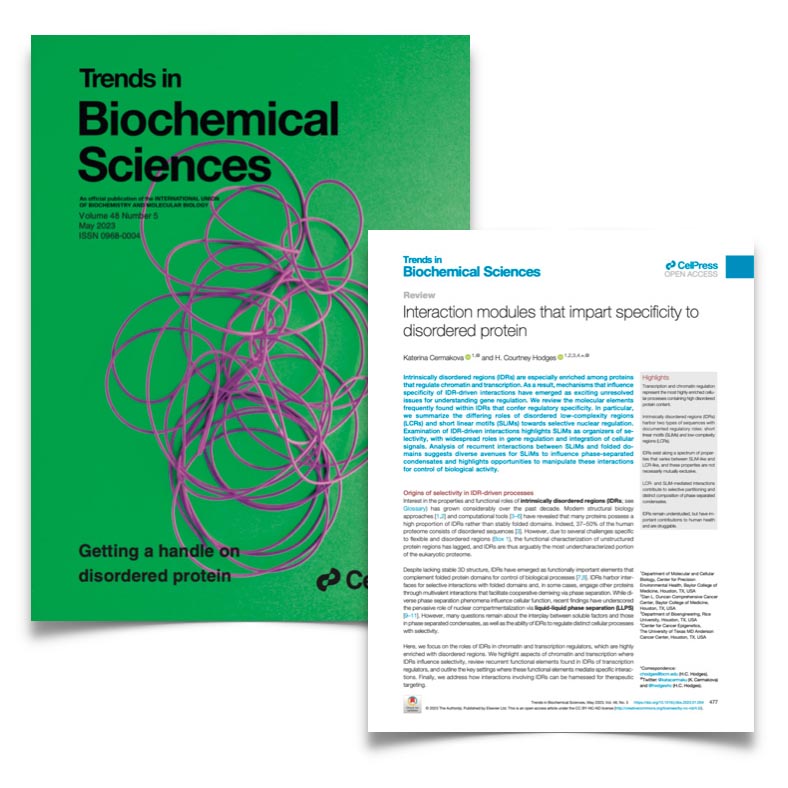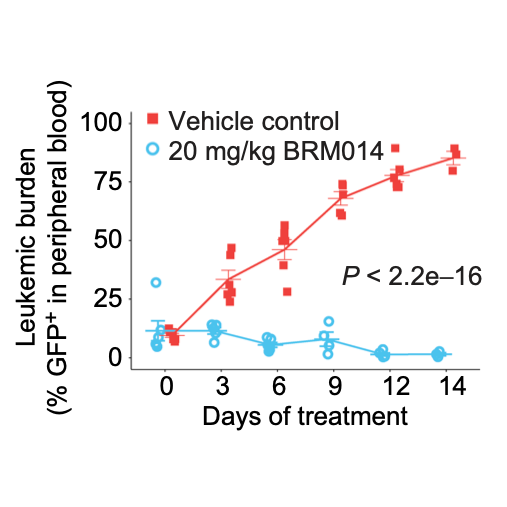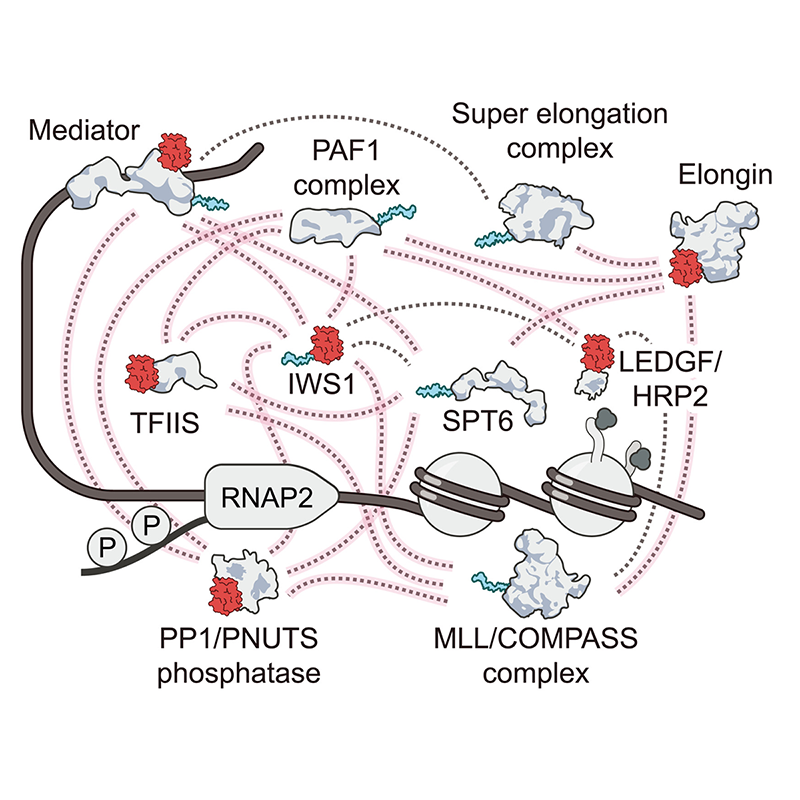
Selected for cover of Trends Biochem Sci!
6 Feb 2023We review the molecular elements frequently found within IDRs that confer regulatory specificity.

We review the molecular elements frequently found within IDRs that confer regulatory specificity.

We provide the first view of a new chromatin therapy in an immunocompetent model of AML.

We identified a common binary interaction module found in major transcription elongation regulators.
The ability to visualize the atomic structures of proteins and protein complexes has made remarkable contributions towards our understanding of the gene expression machinery. Recent technical advances now routinely enable structural insights about multi-subunit protein assemblies reaching into the megadalton scale.
Despite the unprecedented power to resolve such structures, modern techniques are still largely unable to resolve flexible, intrinsically disordered, or dynamic regions. As a result, revealing the structural basis underlying the biology of disordered protein remains the dominant challenge in structural biology for the coming decades.
Despite lacking stable structure, intrinsically disordered regions (IDRs) are especially enriched in proteins that regulate chromatin and transcription. Hence, unstructured protein represents a uniquely important and unaddressed frontier for structural, biochemical, and cellular biology underlying gene regulation.
We aim to reveal the structural basis for highly specific regulatory activities encoded within IDRs of the gene expression machinery